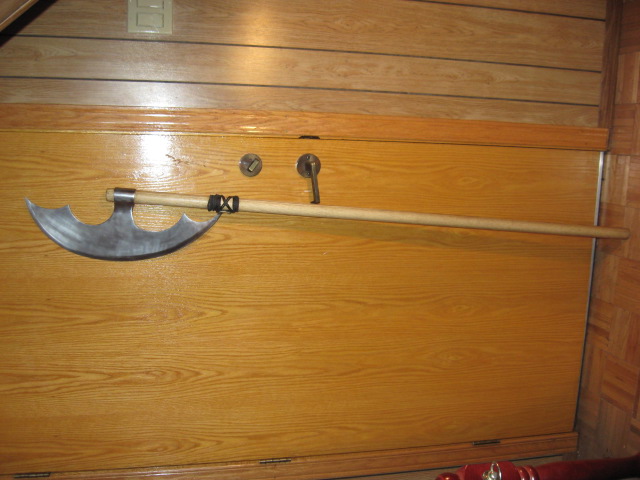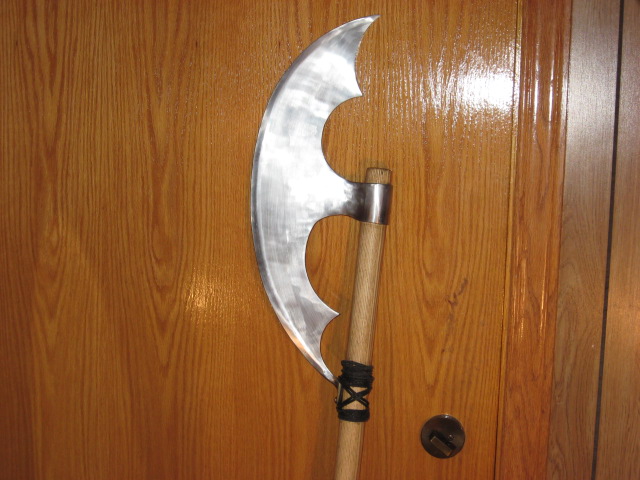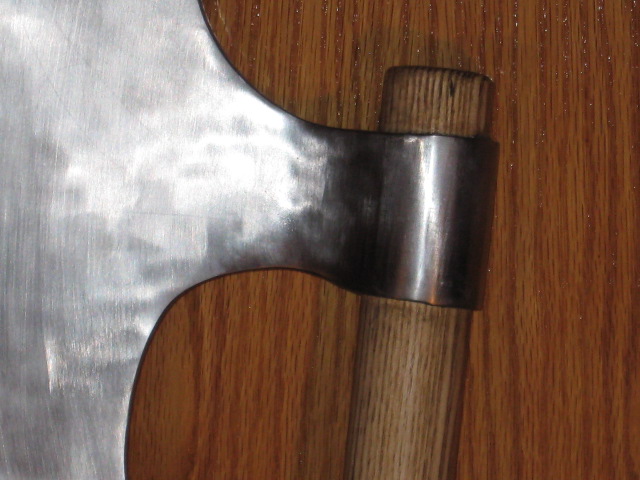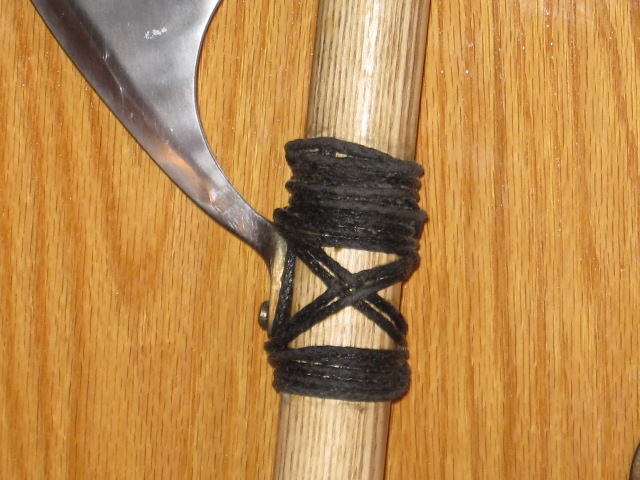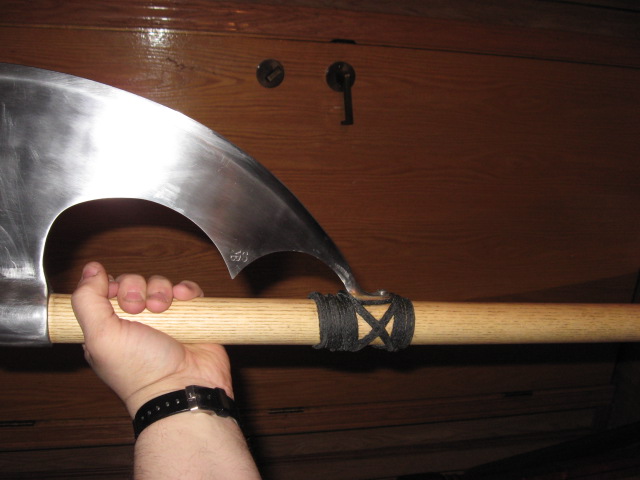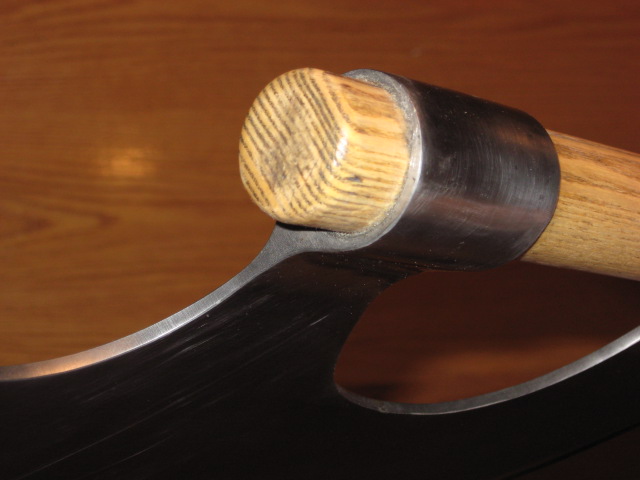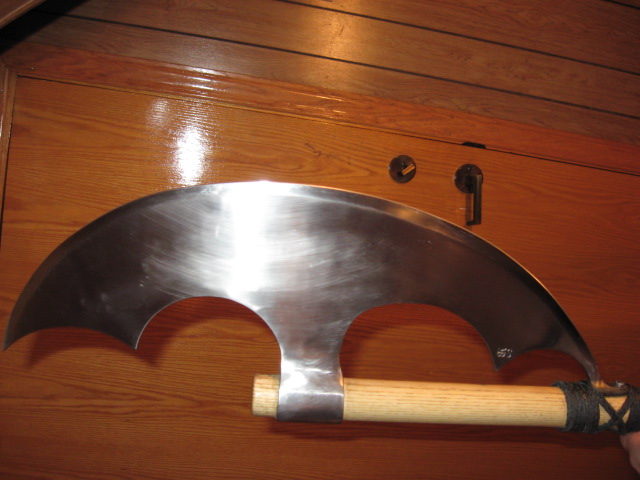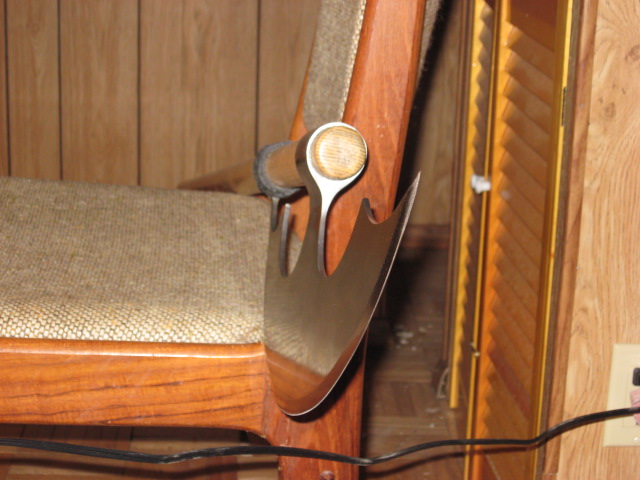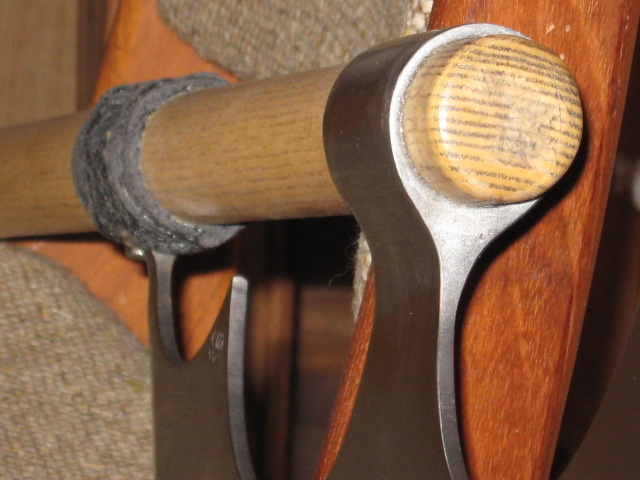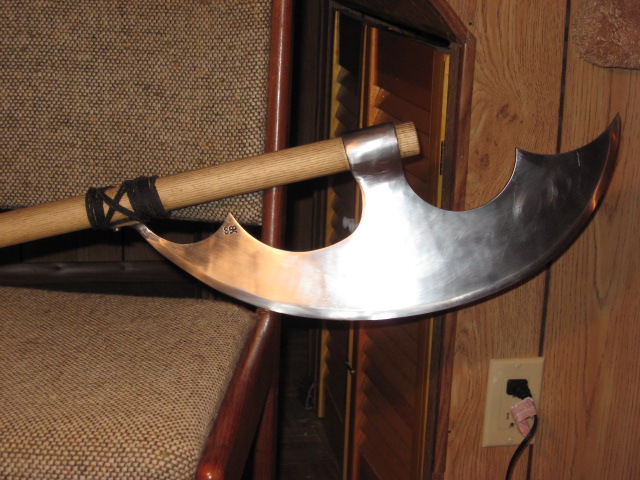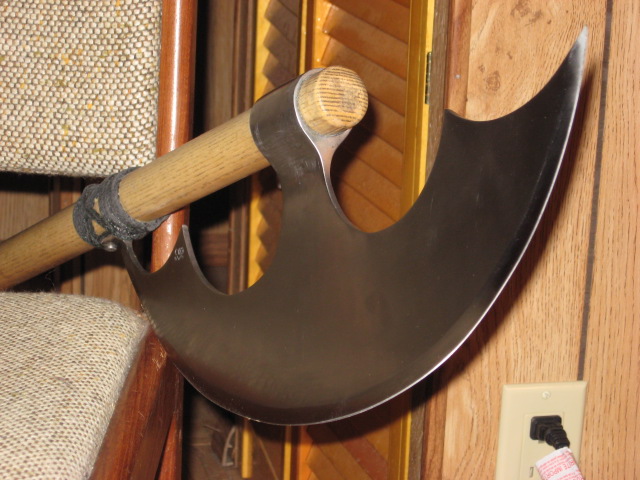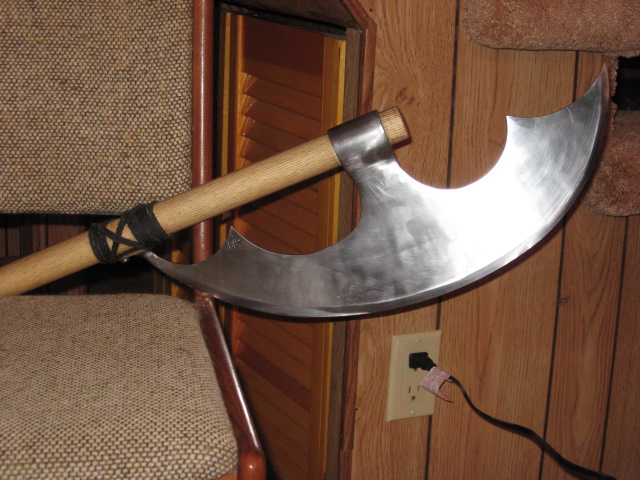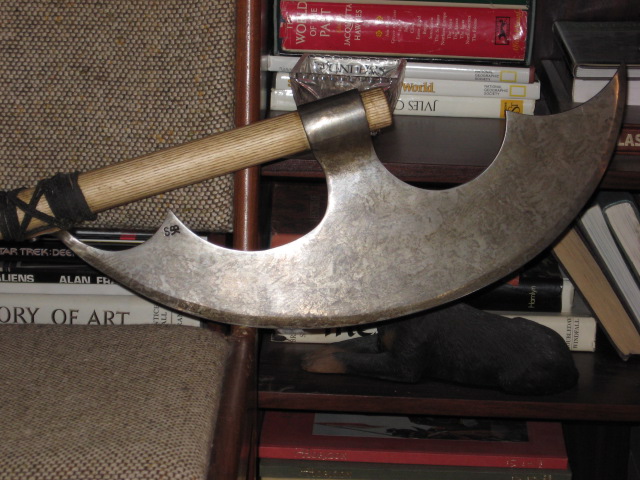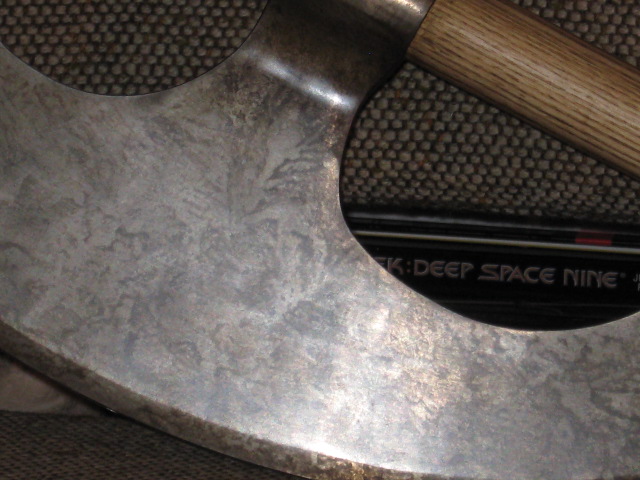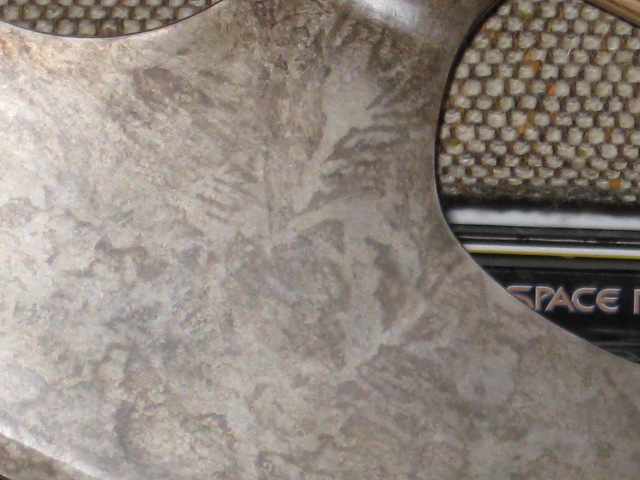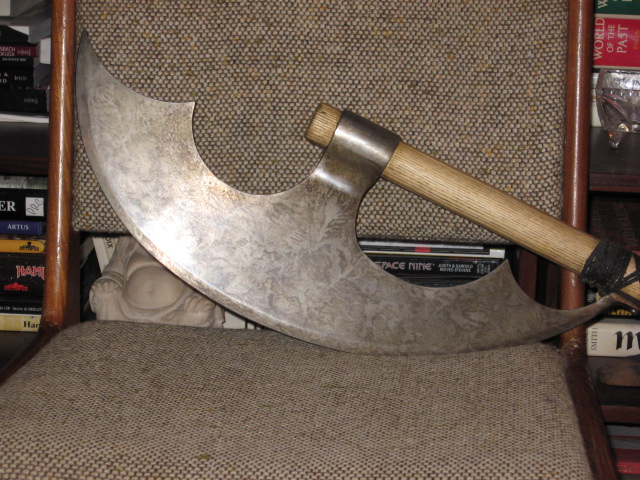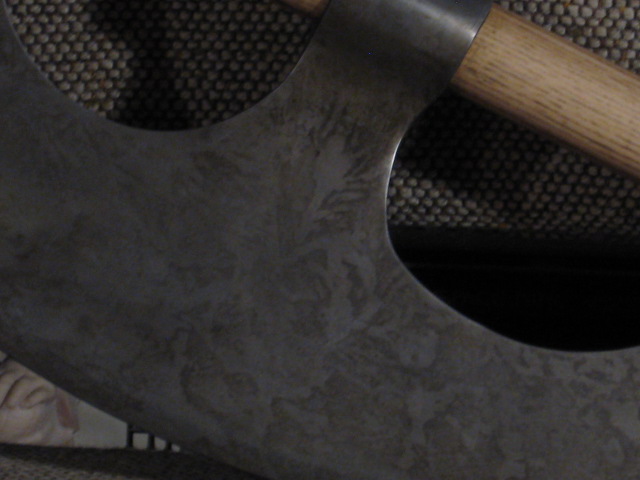http://www.kultofathena.com/product.asp?item=...diche+Head
First a few statistics:
From the KoA site,
| Quote: |
| This Bardiche head is made of carbon steel with a hardened and sharpened edge. Socket is approximately 1 3/8' inches across.
Overall Length: 20 1/2'' Width: 5 1/2'' 3 lb 6 oz |
Total weight mounted on Ash haft 1 3/8" diameter: 5 lbs 1 oz
Total length mounted: 65 7/8"
Length of Haft: 58 "
Length of Blade 20"
Width of blade counting in socket: 7 1/2"
POB, mounted: 47" from butt, note this coincides with the inside curve of the bottom of the axe blade where it meets the tab.
The Ash haft I bought has very good and strait grain and fitted the eye of the axe perfectly, so I didn't have to do any fitting at all to make it work.
For the tab I used and old bolt head I had lying around for probably a century or two ( Joke, but my Dad never threw away any metal bits so who knows how many decades it's been lying there quietly rusting. ;) )
I cut it to slightly less than the total of tab thickness + haft thickness and polished off any rust.
The diameter of the bolt was a few thousands of an inch smaller than the hole in the tab.
Drilled through the tab hole into the haft after I had mounted the socket on the top end of the haft and glued it on with 5 minute epoxy inside the eye. The hole was drilled with a bit slightly smaller in diameter than the bolt so that the bolt would be tight when nailed into both the tab and haft + 5 minute epoxy.
Oh, sanded down the haft to a nice 1200 grit finish although only to the degree of having a smooth surface but not enough to remove completely earlier larger grit marks or wood imperfections in the direction of the grain.
Oiled the haft with Tung" N Teak oil, but the finish needs many more repeats of oiling and light sanding.
The cord warping around and at the tab doesn't serve any purpose in holding in the bolt or securing the bottom of the Bardiche head on the haft but does reinforce the haft above and below the tab to keep the haft from splitting by taking up some of the sock of a heavy blow: I don't know if this is historically correct or not, but it seems to me useful and structurally useful + I like the look of it. ( Note: Cord was wetted with carpenters glue as it was wrapped around the haft and more glue rubbed into the cord after tying it off ).
In handling this is not an overly heavy axe but similarly to a Danish axe or any large headed axe the weight is all at the top. This weight is very controllable with both hands on the haft bit one must get used to the feeling of the axe wanting to rotate in the hands when swung sideways in a horizontal blow. An oval haft might be better for this than round.
I selected the length of haft for a number of reasons:
A) If made too long I would risk hitting the ceilings of my house. ;) :p :lol:
B) Too long and the head would be hard to manage as this Bardiche and any Bardiche with the same scale of head would be too heavy for a very long polearm in my opinion as this type of weapon is for medium to close work relative to a very long Bill, Halberd or Spear that could easily be a foot or two longer with much lighter heads.
C) Didn't want to go shorter than this for the haft because at this minimal length the haft is long enough to cover and protect the legs and lower body using the " Queue " of the Bardiche using Poleaxe techniques.
The BKS Bardiche head seems to be of excellent quality and the socket curves well onto the blade in a smooth curve as it should. The blade came in very sharp with a minimal secondary bevel that could be rounded out into an apple seed edge with a bit of work if one wanted to do this.
The finish is a smooth but not overpolished satin finish that I may eventually do some campaign aging/pattination but I took the pics before doing any antiquing on the blade to better show how it looks when purchased. ( Note in fitting and removing some epoxy from the blade I may have added some very light scratches, but I didn't worry too much about this since I am probably going to do that special finish anyway ).
As a weapon it is very scary impressive and I would guess that it handles very much like a Danish Axe, so why the differences from the Danish Axe in blade shape ?
Just speculation and I would enjoy some opinions and ideas about the advantages of the Bardiche, if any, over the Danish axe, but here are some of my thoughts about it:
A) Longer edge permits some use in draw/push cuts when fighting in close with a hand very close to the head.
B) The top part of the blade extending beyond the top of the Haft can cut right though a target as opposed to the part below that would maybe " jamb " because of the thickness of the haft. A Danish Axe with a long top horn might be able to do the same but with a much shorter unimpeded section of edge.
C) The top horn of the Bardiche more effective in a thrust.
D) The scalloped section(s) could be used tactically to block or parry or immobilize another weapon.
E) One has hand protection if holding the haft near the top socket when using the Bardiche up close and with a widely spaced grip.
F) The tab helps in not having rotational forces concentrated on the narrow eye alone and also serves as a retention device instead of having a wedge holding the head in place. ( Don't know if a wedge was also used or not historically but none would seem to be needed in my opinion ).
G) And it looks cool and scary for a psychological effect.
